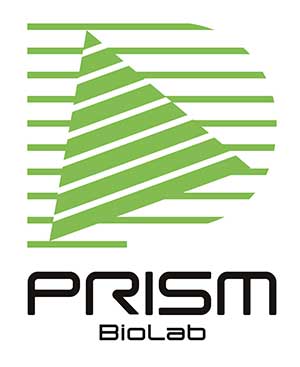Published on: 1月 15, 2024
Peptide-based drug design is one of the widely investigated field in pharmaceutical sciences for targeting protein-peptide or protein-protein interaction (PPI) inhibitions. Small molecule-based peptidomimetics like PepMetics® is a solution but a biologically active peptide itself is also interesting drug motif for designing a target-specific molecule candidate for a particular disease.
In the field of peptide drug design, membrane permeability and metabolic stability are the main problems. Peptidomimetics were designed to solve them without loss of the peptide’s original activity and selectivity by mimicking the three-dimensional structure with sophisticated design of backbone scaffold. But simple derivatization of a bioactive peptide into a drug would be a straightforward strategy. In this sense, it is necessary to develop a strategy to rationally improve the permeability and physiological stability of peptide molecules.
It is well-known that N-methylation to remove N-H bonds of a peptide increases membrane permeability.1) However, it could result in the loss of activity because the N-H group would act as a hydrogen bond donor, which often plays a crucial role in increasing the binding affinity.
Recently in Nature Communications, alternative approaches were proposed and rationalized in a short term.2), 3) These publications focused on the chemical and physical nature of the amide bond connection itself. N-methylation increase the membrane permeability and hence the bioavailability by masking the highly interactive chemical group. Instead, two groups separately reported the alternative bonding to amides. Switching amide bond to ester or thioamide enable a macrocyclic peptide to obtain higher membrane permeability.
These authors measured PAMPA and Caco-2 assays to evaluate the permeability against the parent peptides and N-methylated ones to see the impact of their own strategy. In the cases of macrocyclic peptides in these studies, a transit from amide to ester or thioamide both made the original peptide more permeable.
The rationale for higher permeability of each approach is different. It is no doubt that amide to ester switch removed a hydrogen bond interaction derived from the N-H group of the free amide group. The lower conjugation of RHN-C=O against O-C=O changes the electron donor activity at the carbonyl oxygen as well.
In the case of the replacement to thioamide, there is still an N-H group like the amide, but the nature of bonding has significant difference. The sulfur atom of thioamides shows less hydrogen bond acceptor activity. It is because thioamides have lower conjugation between the nitrogen lone pair and C=S double bond, which makes the thiocarbonyl group lower electron density. A shift from an amide to an ester or a thioester make the peptide to have less interaction with surroundings, which enable it to permeate through the phospholipid bilayer of cell membranes.
Substitution of an amide to ester or thioamide is beneficial for permeation but it could result in the stability in physiological conditions. In both research, Stability in a simulated gut fluid were evaluated and no significant degradation were observed due to the hydrolysis-resistant nature of cyclic peptide structures. These molecules showed the same or better stability in serum/plasma as well.
N-methylation of a peptide restrict the conformation of the amide bond. It sometimes increases the activity of the peptide by fixing it to the high affinity structure. But N-methylation could also force the molecule into the unwanted conformation, which results in the lower activity against the target.
The conformational restriction of these three approaches is different from each other and we can take advantage of them case by case to maximize the druggability. It is always beneficial to have different options to solve a particular issue. Sequence mimetics of the macrocyclic peptide by PepMetics® is also the alternative to solve the permeation and other problems. We would appreciate the partner to use our platform and be willing to collaborate with you.
https://doi.org/10.3390%2Fmd19060311
https://doi.org/10.1038/s41467-023-36978-z
https://doi.org/10.1038/s41467-023-41748-y

